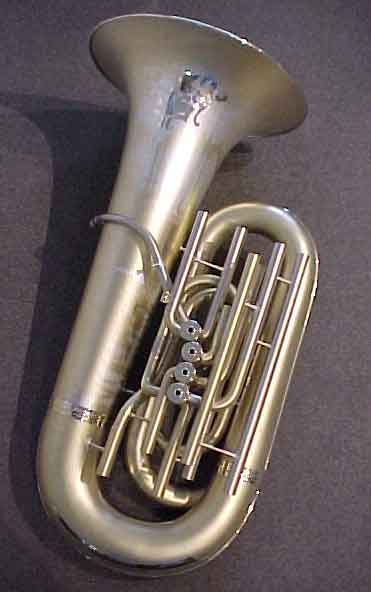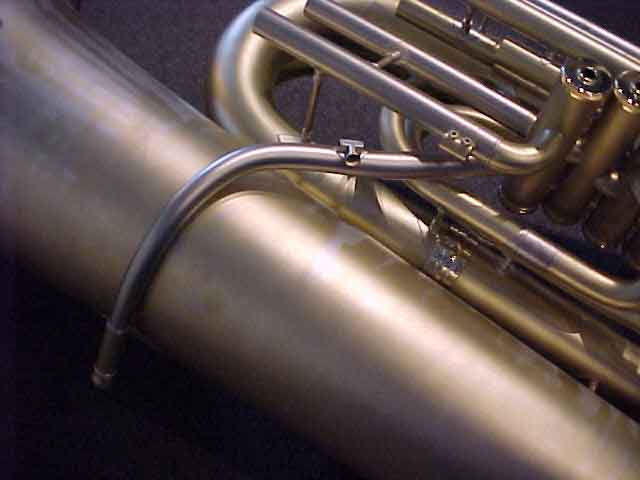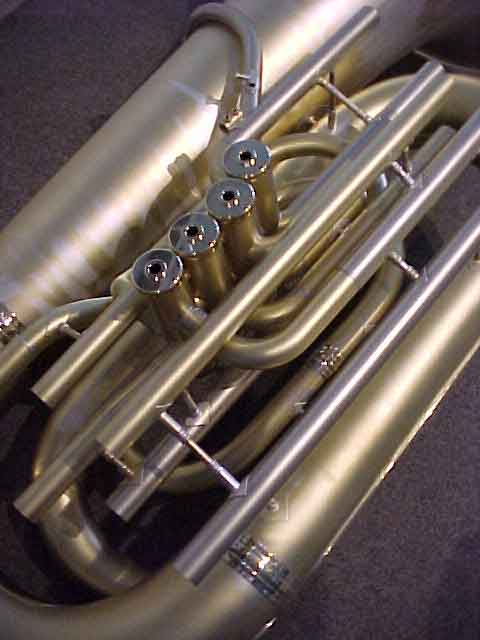I have always been a believer in the idea or form following function. The reality is that I don't start with any old crap horn available. I only use instruments that have a good sound to start with and a bugle with proper scale. Because I don't use questionable horns, I am able to focus on improvements like converting three to four and top to front action valves. I can also make changes to the mouth-pipe design and alter slides to facilitate responsiveness, intonation adjustments or correct pitch issues that may have previously existed in the original design. These alterations are made to an instrument that already has a great sound and make it that much more desirable to the modern musician. I can not take any credit for a horns quality of sound, that goes to the original designers and Craftsmen who produced the bell and branches. I can only take credit for improving the facility and functionality of a limited but great sounding instrument while not screwing it up and creating a tool that will allow the musical artist to express themselves to the fullest of there ability. There are a few serious players out there playing on horns I have restored. Most are not tubas but trumpets, cornets and trombones. There are a few very special vintage french horns and a smattering of double bells but for there owners its more about the music, not so much the tools. The first tuba I did like the ones you are talking about was completed in 1993 and was done for Mike Russell who is now retired from the Seattle Symphony. I think that because the majority of players in major orchestras use CC tubas and there are a lot of truly fine modern CCs on the market, such musicians have no real need for my services when it comes to vintage restorations. However, there are a number of serious players around North America that I have repaired and or rebuilt standard modern instruments for but in my opinion, nothing truly note worthy.
Artists level? Oh, you mean clean, straight, well fitted, properly aligned and neatly soldered, assembled in a sensible manor and actually finished and plated the way they would if they were new. Thats not Artsy, that just doing the job the way it is suppose to be done.

Daniel C. Oberloh
Oberloh Woodwind and Brass Works




